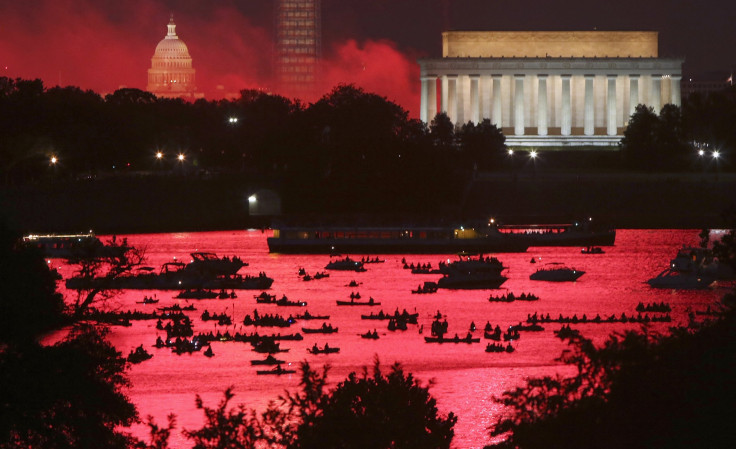
The Fourth of July marks Independence Day in the U.S. But what actually happened on Independence Day?
On July 4, 1776, disaffected British colonists of the Second Continental Congress finalized the Declaration of Independence. The day America now celebrates as its birthday actually came two days after the Congress’ resolution for independence, which basically cleaved the colony from England on July 2.
July 4 would go on to become a federal holiday. It also has an eerie history, cropping up in uncanny ways over time. The history of the Fourth of July offers a snapshot of American history as a whole, especially slavery and the Civil War.
1) Iroquois nation cedes lands to British colonies in the Treaty of Lancaster (July 4, 1744). A speech by a prominent Iroquois diplomat would later be read by Benjamin Franklin and be credited for influencing the U.S. constitution. He said:
“Our wise forefathers established Union and Amity between the Five Nations. This has made us formidable; this has given us great Weight and Authority with our neighboring Nations. We are a powerful Confederacy; and by your observing the same methods, our wise forefathers have taken, you will acquire such Strength and power. Therefore whatever befalls, never fall out with one another.”
2) British soldier George Washington surrenders to French Captain Louis Coulon de Villiers during the French and Indian War, ceding Fort Necessity in Fayette County, Pennsylvania (July 4, 1754). Washington’s military experience would later enable him to defeat the British during the U.S. War of Independence.
3) Continental Congress Signs the Declaration of Independence (July 4, 1776).
4) West Point Military Academy founded (July 4, 1802). America’s first military academy would produce it’s most famous generals; Stonewall Jackson, Robert E. Lee, William Tecumseh Sherman, Ulysses Grant, Douglas MacArthur, George Patton, and Norman Schwarzkopf; plus 18 astronauts and 74 medal of honor recipients.
5) Thomas Jefferson (3rd U.S. president) dies (July 4, 1826).
6) John Adams (2nd U.S. president) dies, on exactly the same day as Thomas Jefferson. Both men had served as president and attended the signing of the Declaration of Independence.
7) James Monroe, (5th U.S. President), dies (July 4, 1831).
8) Slavery abolished in New York State, exacerbating tensions over the slave trade in the South (July 4, 1827).
9) Confederate Army of Northern Virginia retreats from Gettysburg marking the end of the invasion of the North (July 4, 1863).
10) France gifts the Statue of Liberty to the U.S (July 4, 1886). The monument closes after the September 11th attacks of 2001, but is reopened to the public on July 4, 2009.
11) The Philippines gains independence from the U.S. (July 4, 1946). It is the last U.S. colony to gain independence, excepting the portion of Panama surrounding the Panama Canal, returned in 1999.
12) Lyndon B. Johnson signs Freedom of Information Act, marking a new era of transparency in government (July 4, 1966).
13) Singer Barry White dies (July 4, 2003).
© 2024 Latin Times. All rights reserved. Do not reproduce without permission.